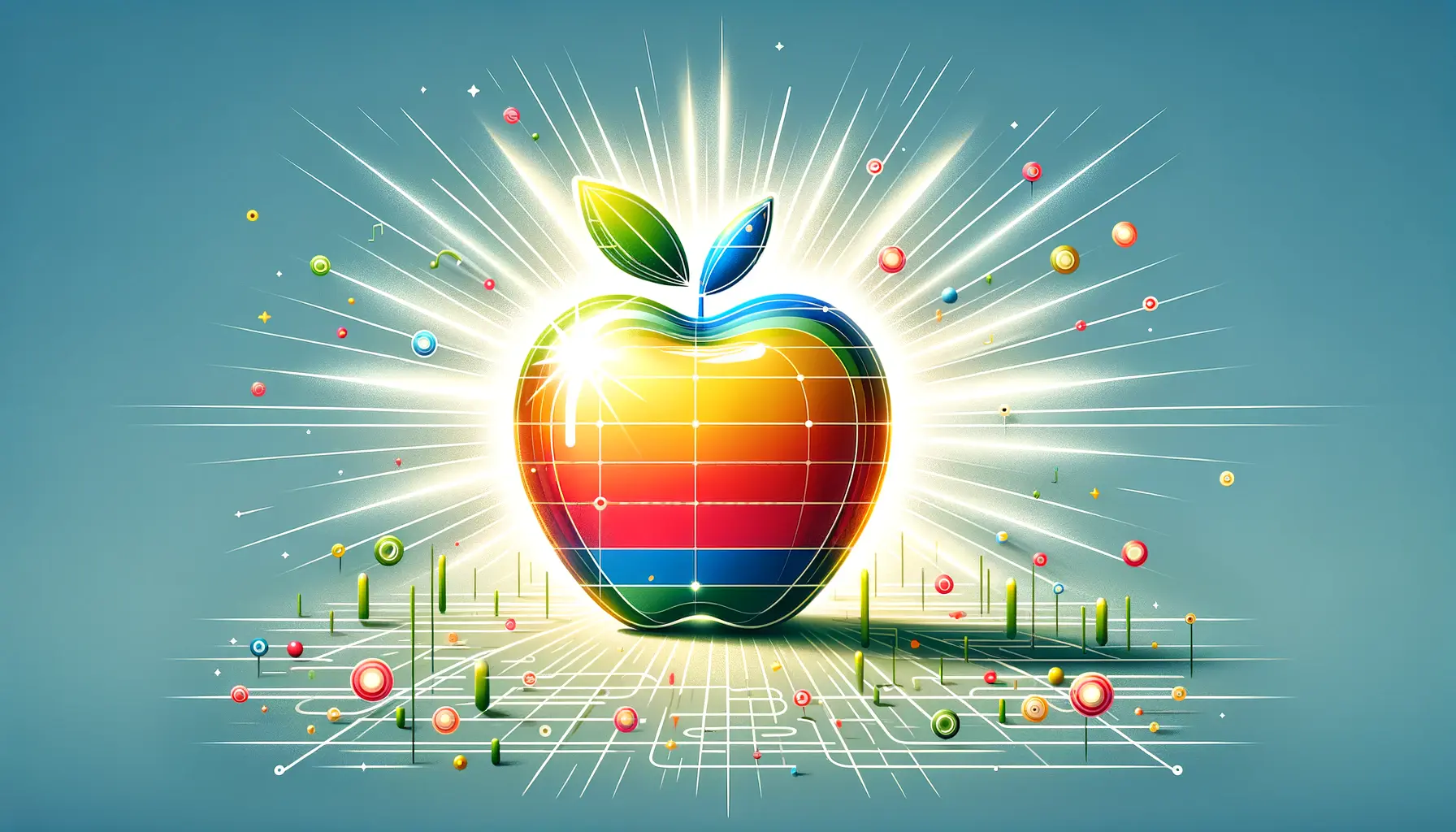The digital landscape is continuously evolving, and with it, the strategies for optimizing online content.
In the realm of search engine optimization (SEO), a significant shift is occurring towards visual elements, particularly images.
This article delves into the nuances of Image SEO, a critical yet often overlooked aspect of digital marketing strategies.
By understanding and implementing advanced Image SEO techniques, businesses and content creators can significantly enhance their online visibility and engagement.
Image SEO is not just about making images discoverable by search engines; it’s about leveraging these visual elements to improve overall website performance and user experience.
With the right approach, images can become powerful tools to increase a website’s search visibility, drive traffic, and engage users more effectively.
- Understanding the Basics of Image SEO
- Optimizing Images for Enhanced User Engagement
- Leveraging Image SEO for Enhanced Search Engine Rankings
- Advanced Techniques in Image SEO
- Integrating Image SEO into Your Overall SEO Strategy
- Overcoming Challenges in Image SEO
- Future Trends and Innovations in Image SEO
- Concluding Insights on Image SEO Revitalization
- Image SEO Revitalization: Essential FAQs
Understanding the Basics of Image SEO
At its core, Image SEO involves optimizing images so they can be easily indexed and understood by search engines.
This process includes various techniques such as selecting the right file formats, compressing images for faster loading times, and using descriptive file names and alt texts.
These foundational steps are crucial for ensuring that images contribute positively to a website’s SEO performance.
Choosing the correct image format, for instance, plays a pivotal role in both the quality and the size of the image.
Formats like JPEG, PNG, and WebP offer different advantages in terms of quality and compression.
Similarly, compressing images without losing quality ensures that they load quickly on various devices, enhancing user experience and SEO rankings.
File Names and Alt Texts
Descriptive file names and alt texts are essential components of Image SEO.
A file name should clearly describe what the image represents, using relevant keywords where appropriate.
Alt texts, on the other hand, provide a textual description of the image, aiding search engines in understanding the content and context of the image.
This practice not only improves SEO but also enhances accessibility for users with visual impairments.
For instance, an image of a sunset over the ocean could have a file name like “ocean-sunset.jpg” and an alt text like “A breathtaking sunset over a calm ocean.” These descriptions help search engines index the image accurately and present it in relevant search queries.
Key Point: Effective Image SEO starts with the basics – choosing the right format, compressing images, and using descriptive file names and alt texts. These steps are fundamental in making images a valuable asset in your SEO strategy.
Impact of Image Size and Quality
The size and quality of images are crucial factors in Image SEO.
High-resolution images are desirable for their clarity and detail, but they can also slow down page loading times, negatively impacting SEO and user experience.
Balancing image quality with file size is therefore essential.
Tools like TinyPNG or Adobe Photoshop can be used to reduce image file sizes without compromising their quality significantly.
Moreover, the use of responsive images, which adapt to different screen sizes and resolutions, ensures that users have an optimal viewing experience regardless of their device.
This adaptability not only improves user engagement but also contributes positively to SEO rankings.
Optimizing Images for Enhanced User Engagement
Engaging users through images goes beyond just their appearance on a webpage.
It’s about strategically using visuals to enhance the user’s journey on your site.
This part of Image SEO focuses on how images can be optimized to not only attract users but also keep them engaged with your content.
Images can break the monotony of text, making content more digestible and appealing.
However, their placement and relevance are key to ensuring they add value to the user’s experience.
Strategic Placement of Images
Where you place an image on your page can significantly impact user engagement.
Images should be used to complement the content, appearing in context with the text they are related to.
This strategic placement helps in drawing the user’s attention and making the content more memorable.
- For example, an image illustrating a key point in your article should be placed close to the relevant text.
- Using images to break up long sections of text can also make the content more approachable and easier to navigate.
Relevance and Quality of Visuals
The relevance and quality of the images used are just as important as their placement.
High-quality, relevant images can significantly enhance user engagement and contribute to the overall aesthetic of your site.
- Choose images that are directly related to the content, enhancing the message you want to convey.
- Ensure that the images are of high resolution and professionally presented, as poor-quality images can detract from the user’s experience.
Idea: Utilize images not just as decorative elements, but as integral parts of your storytelling. This approach can transform a standard piece of content into an engaging, visually enriched experience.
Using Images to Guide User Behavior
Images can also be used to guide user behavior on a website.
By strategically placing visuals, you can direct users’ attention to specific sections of your site, such as call-to-action buttons or important information.
- For instance, an image placed near a sign-up form can draw attention to it and potentially increase conversions.
- Visual cues can also be used to lead a user through a series of steps or different parts of a webpage, enhancing the navigational experience.
Leveraging Image SEO for Enhanced Search Engine Rankings
Image SEO is not just about making your site look good; it’s a powerful tool to boost your site’s ranking on search engines.
This part of the article explores how optimized images can directly influence your website’s position in search engine results pages (SERPs).
Search engines like Google have evolved to recognize and understand images better, making it crucial to optimize them for better visibility and ranking.
Image Sitemaps and Indexing
Creating an image sitemap is an effective way to ensure that search engines can find and index all the images on your site.
This step is particularly important if your site uses JavaScript galleries or image pop-ups that might not be easily discoverable by search engine crawlers.
- An image sitemap provides a clear index of all the images, helping search engines understand the structure and content of your site better.
- Submitting your image sitemap to search engines can significantly improve the chances of your images appearing in image search results.
Utilizing Structured Data for Rich Snippets
Structured data can be used to provide search engines with detailed information about the images on your site.
This practice can lead to the appearance of rich snippets in search results, which are more eye-catching and can drive higher click-through rates.
- By tagging images with structured data, you can provide context such as product details, prices, and reviews, making them more informative in search results.
- This approach is particularly beneficial for e-commerce sites where images play a crucial role in showcasing products.
Note: The integration of structured data for images is a forward-thinking approach that can significantly enhance your content’s visibility and appeal in search results.
Impact of Image SEO on Local Search
For businesses targeting local audiences, Image SEO can be a game-changer.
Optimized images can enhance local search visibility, making your business more discoverable to nearby customers.
- Incorporating geo-tagged images can help in appearing in local search results, connecting your business with the local audience.
- Images of your storefront, products, or local events can add authenticity to your local business listings, encouraging more engagement from potential customers.
Advanced Techniques in Image SEO
Moving beyond the basics, there are advanced techniques in Image SEO that can further enhance your website’s visibility and user engagement.
These methods involve a deeper understanding of how search engines interpret and prioritize images.
Implementing these advanced strategies can give you a competitive edge, ensuring your images are not only seen but also contribute significantly to your overall SEO strategy.
Responsive Images for Multi-Device Compatibility
In today’s multi-device world, ensuring your images look great on all screens is crucial.
Responsive images adapt to different screen sizes and resolutions, providing an optimal viewing experience across devices.
- Using HTML’s srcset attribute allows you to specify different image files for different screen sizes, ensuring fast loading times and crisp visuals on all devices.
- This approach is essential for mobile optimization, as it directly impacts user experience and search engine rankings.
Image Compression and Page Load Speed
Page load speed is a critical factor in SEO, and images are often the largest contributors to page size.
Efficient image compression can significantly reduce file sizes without compromising quality.
- Tools like ImageOptim or Kraken.io can be used to compress images, enhancing page load speed and improving SEO performance.
- Remember, faster-loading pages provide a better user experience and are favored by search engines.
Truth: Efficient image compression is a balancing act between maintaining visual quality and reducing file size to improve page load speed, a key factor in SEO performance.
AI and Machine Learning in Image Recognition
Artificial intelligence (AI) and machine learning are revolutionizing how search engines interpret images.
These technologies enable search engines to understand the content and context of images more accurately.
- Using AI tools to analyze and optimize images can ensure they are recognized and correctly categorized by search engines.
- This advanced approach can lead to better image visibility in search results, as search engines can more accurately match images to user queries.
Integrating Image SEO into Your Overall SEO Strategy
Image SEO should not be an afterthought but an integral part of your comprehensive SEO strategy.
This integration ensures that every aspect of your website, including visuals, works towards the common goal of enhancing your online presence and search engine rankings.
Coordinating image optimization with other SEO efforts can lead to a more cohesive and effective online strategy.
Aligning Image SEO with Content Marketing
Images play a vital role in content marketing, and aligning them with your content strategy can amplify your message and reach.
This alignment involves using images that complement and enhance your written content.
- Choose images that reflect the tone and topic of your articles or blog posts, adding visual interest and aiding in storytelling.
- Use images to highlight key points, making complex information more accessible and engaging for your audience.
Collaboration Between Design and SEO Teams
Effective Image SEO requires collaboration between design and SEO teams.
Designers need to create visually appealing images, while SEO specialists ensure these images are optimized for search engines.
- Regular communication and collaboration between these teams can lead to a more effective and cohesive SEO strategy.
- Designers should be aware of SEO best practices, such as file formats and compression, while SEO specialists should understand the importance of visual aesthetics.
Featured Info: The synergy between design and SEO teams is crucial for creating visually stunning and SEO-friendly images, leading to a stronger overall online presence.
Continuous Monitoring and Optimization
Image SEO, like all SEO practices, is not a one-time task but a continuous process.
Regular monitoring and optimization of your images are essential to keep up with changing search engine algorithms and user behaviors.
- Use analytics tools to track the performance of your images in terms of engagement and contribution to SEO goals.
- Regularly update and optimize your images to ensure they remain relevant and effective in driving traffic and engagement.
Overcoming Challenges in Image SEO
While Image SEO offers numerous benefits, it also presents unique challenges that need to be addressed to fully leverage its potential.
Understanding and overcoming these challenges is key to maximizing the impact of your visual content in search rankings and user engagement.
Addressing these challenges head-on can lead to a more robust and effective Image SEO strategy.
Dealing with High-Quality Images and Load Times
One of the primary challenges in Image SEO is balancing high-quality visuals with website load times.
High-resolution images can significantly slow down a website, negatively impacting both user experience and SEO.
- Implementing advanced compression techniques and choosing the right file formats can help maintain image quality while reducing file size.
- Using lazy loading for images can also improve page load times, as images are only loaded when they are needed.
Navigating SEO for Complex Image-Heavy Websites
Websites with a heavy reliance on images, such as portfolios or e-commerce sites, face unique SEO challenges.
Ensuring these images are fully optimized and indexed by search engines is crucial.
- Creating detailed image sitemaps and using structured data can help search engines better understand and index these images.
- Regularly auditing these websites for broken images or links is also important to maintain SEO health.
False Information: It’s a common misconception that Image SEO is only about alt texts and file names. In reality, it encompasses a wide range of practices, from technical optimization to strategic placement and usage.
Adapting to Evolving Search Engine Algorithms
Search engine algorithms are constantly evolving, and staying updated with these changes is crucial for effective Image SEO.
What works today might not be as effective tomorrow.
- Staying informed about the latest trends and updates in search engine algorithms can help you adapt your Image SEO strategy accordingly.
- Participating in SEO forums, following industry blogs, and attending webinars can be beneficial in keeping up with these changes.
Future Trends and Innovations in Image SEO
The field of Image SEO is continually evolving, with new trends and innovations shaping the way we optimize and utilize images for search engines.
Staying ahead of these trends is crucial for maintaining a competitive edge in the digital landscape.
Understanding and embracing these future developments can position your website to take full advantage of the power of Image SEO.
Emergence of Visual Search Technology
Visual search technology is rapidly advancing, allowing users to search using images instead of text.
This shift presents new opportunities and challenges for Image SEO.
- Optimizing images for visual search involves ensuring they are clear, contextually relevant, and tagged with accurate metadata.
- Businesses should start preparing for visual search by optimizing their product images and considering how their images can be used as search queries.
AI-Driven Image Optimization and Creation
Artificial intelligence is set to play a significant role in Image SEO, from optimizing images for better performance to creating AI-generated visuals.
- AI can analyze large sets of images, providing insights into how to optimize them for SEO and user engagement.
- AI-generated images can also be used to create unique and engaging visuals that are optimized for both users and search engines.
Idea: Embracing AI in Image SEO not only streamlines the optimization process but also opens up new creative possibilities for visual content.
Increased Focus on Image Authenticity and Quality
As search engines become more sophisticated, there will be an increased focus on the authenticity and quality of images.
Authentic, high-quality images will likely rank better and engage users more effectively.
- Businesses should focus on creating original, high-quality images that accurately represent their brand and message.
- Stock photos, while convenient, may not provide the same level of engagement and authenticity as original imagery.
Concluding Insights on Image SEO Revitalization
In the dynamic world of digital marketing, the revitalization of Image SEO stands as a pivotal strategy for enhancing search visibility.
As we’ve explored, the integration of optimized visuals into your SEO plan is not just a trend but a necessity in today’s visually-driven online environment.
The journey through the various facets of Image SEO underscores its significance in boosting a website’s performance, both in terms of search engine rankings and user engagement.
Key Takeaways for Effective Image SEO
Reflecting on the insights gathered, several key takeaways emerge that are essential for anyone looking to harness the power of Image SEO:
- Understanding the basics of Image SEO, including file formats, compression, and descriptive tagging, lays the foundation for success.
- Advanced techniques such as responsive images, AI-driven optimization, and adapting to evolving search engine algorithms are crucial for staying ahead in the SEO game.
- The integration of Image SEO into overall SEO and content marketing strategies ensures a cohesive and effective online presence.
- Staying abreast of future trends, particularly in visual search technology, prepares businesses for the next wave of digital marketing innovations.
Embracing the Future of Image SEO
As we look to the future, the role of Image SEO in digital marketing strategies is set to become more prominent.
The continuous evolution of search engine algorithms and the advent of AI and visual search technologies will further shape the landscape of Image SEO.
Businesses and marketers must remain agile, adapting their strategies to these changes to maintain and enhance their online visibility.
In conclusion, the revitalization of Image SEO is not just about optimizing images; it’s about embracing a holistic approach to digital marketing that recognizes the power of visuals.
By doing so, businesses can unlock new opportunities for growth, engagement, and visibility in the ever-evolving digital world.
Want your website to top Google search rankings? Leave the SEO to our professional agency!
Image SEO Revitalization: Essential FAQs
Delving into the realm of Image SEO Revitalization, here are some frequently asked questions to guide you through this crucial aspect of digital marketing.
It’s the process of optimizing images for better search engine visibility, focusing on aspects like format, size, and contextual relevance.
Optimized images enhance site speed and user experience, contributing to improved search engine rankings and user engagement.
Formats like JPEG, PNG, and WebP are ideal, balancing quality and file size for optimal website performance.
Image compression reduces file size, speeding up page load times, a critical factor in SEO and user experience.
Alt texts provide a textual description, helping search engines understand and index images accurately, enhancing SEO.
Yes, AI tools can analyze and optimize images for better search engine recognition and categorization.
It ensures images are responsive and load quickly on mobile devices, crucial for mobile user experience and SEO.
Absolutely, as visual search technology advances, optimizing images for this type of search becomes increasingly important.










